There’s a wide range of use cases for portable power, as so much of our lives rely on it. The portable battery storage industry is really gaining momentum, with the most recent entrant being DJI.
On the surface, portable batteries may be a strange fit in the product portfolio of a drone maker, but when we look a little deeper, it makes a lot of sense.
Those of us who own and regularly use DJI products, will know just how important recharging is and if you’ve ever travelled to a beautiful location to capture it with your drone, only to find your drone, controller or headset battery is flat, you’ll understand just how valuable this product category it.
DJI enters the market with two products, the DJI Power 1000 and the DJI Power 500 (reviewed). Both offer a versatile portable power station, designed to meet the diverse needs of outdoor enthusiasts, content creators, and those seeking reliable emergency backup power.
You may be someone who flies a DJI drone, but you don’t do that in isolation. You’ll have a phone, possibly a GoPro or action camera, maybe even an electric bike to travel to destinations you otherwise couldn’t get to and all of these devices can be charged with these battery banks.
The Power 500 offers 512Wh of capacity and a maximum output of 1000W, making it great for a wide range of devices and appliances. On that note, you may have never bought a DJI product before and simply want access to some portable power when you go camping, whether it be a kettle, toaster, or even a TV or speaker.
The beautiful thing about portable power is that you get to have access to experiences and products that require electricity, without being tied to the grid, making them available almost anywhere in the world.
Having used the Power 500 for a couple of weeks now, it’s time to delve into its design, features, performance, issues and opportunities, price and availability, and overall value.
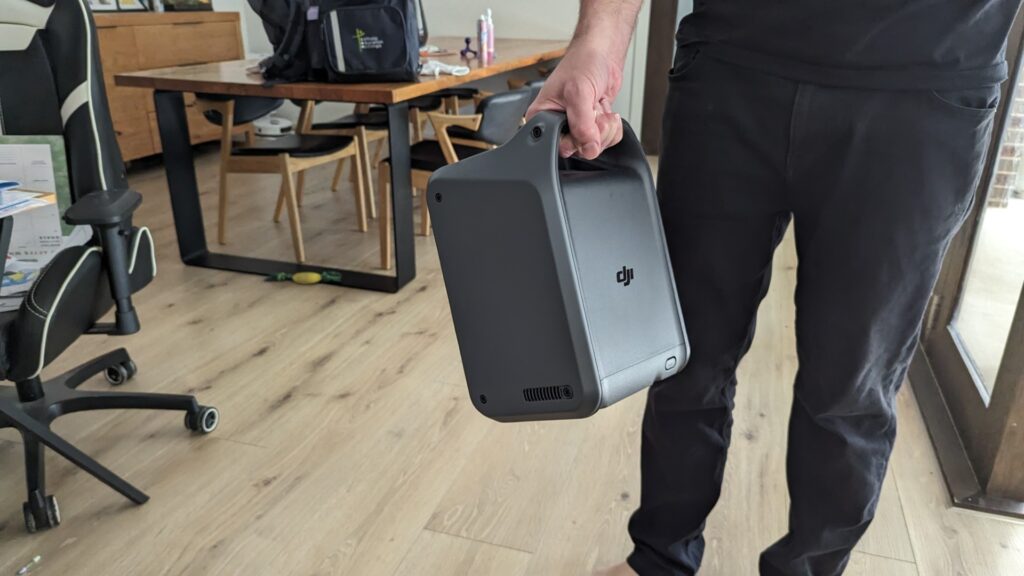
Design
The DJI Power 500 features a sleek and compact design, making it easy to transport. The exterior is crafted from durable materials that ensure longevity and resistance to outdoor elements. It’s the matte grey we’re familiar with from DJI’s drone series which is stealthy and utilitarian which I think works well for a product that effectively sits there and functions. It’s not appropriately bright and flashy in its colour scheme, it’s not trying to be a Dyson and this deliberate choice from DJI is a great one.
Obviously, any battery, but specifically ones of this capacity comes inherently with some weight, and to help with that, DJI designers included a robust handle to make transporting it between locations easy.
On the opposite end, you’ll get access to the clearly labelled ports and an LCD screen that provides real-time information on battery level and power output, enhancing user experience and ease of use.
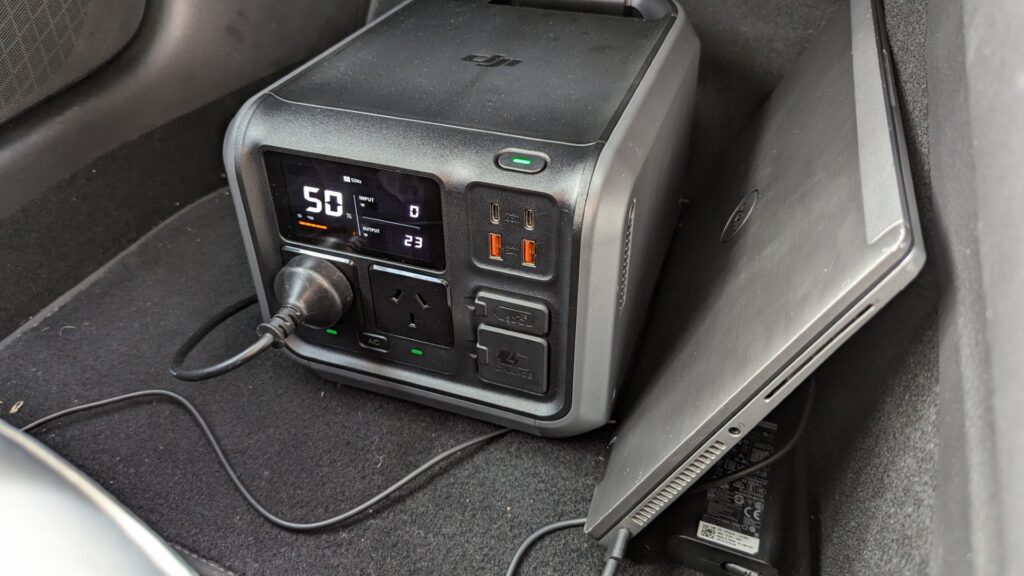

Features
The product is packed with a bunch of features we should work through.
Capacity and Output
If you’ve used a power bank for your phone, this device is similar, but scaled right up, with the capacity to run for hours and output to power larger devices.
The Power 500’s 512Wh capacity combined with a 1000W max output ensures it can support everything from smartphones and laptops to household appliances. It’s high capacity allows it to power multiple devices simultaneously, making it ideal for both everyday use and emergency situations.




Fast Charging
When the Power 500 is depleted, you’ll need to charge it and thanks to its support for rapid charging, it can be fully recharged in just 70 minutes. This rapid recharging is fantastic as it allows you to effectively break for lunch, charge it up and be out the door again with a fully charged mobile power solution.
If you’re wondering whether you can connect devices and have them charge while the device is charging, the answer is a resounding yes.
I connected a drone to the USB-C port and a laptop to the AC port and the LCD display displayed the power flowing in both directions (in and out of the device).
Versatile Ports
The Power 500 includes a variety of ports to meet different charging needs. It offers dual 100W USB-C ports for fast-charging laptops, dual AC outlets for household appliances, dual USB-A ports for smaller devices, and an SDC Lite port for additional compatibility.
This range of ports ensures that users can connect and charge multiple devices simultaneously, enhancing convenience and functionality.
Given we’re still in this transition phase from USB-A to USB-C, it makes sense that DJI went with 2 of each (2x USB-C and 2x USB-A), however personally, I’m almost entirely over to USB-C and would have been very happy with 4x USB-C, or at least 3x to support charging the Avata’s headset, controller and drone batteries with a standard set of cables. If I needed to charge my phone, that’s also USB-C, so yeah, 4x USB-C would be the move next model and anyone who still needs USB-A could use a converter.
Safety
Safety is paramount in the design of the Power 500. It uses Lithium Iron Phosphate (LFP) battery cells, known for their longevity and stability, supporting up to 4000 charge cycles. This is the same battery technology finding its way into many electric vehicles, including our Model Y.
The power station is equipped with comprehensive safety mechanisms, including protections against over-current, over-voltage, over-temperature, and short-circuits.
These features collectively ensure the safety of both the power station and connected devices.
Quiet Operation
The Power 500 operates quietly, with noise levels as low as 25dB during charging. This ultra-quiet operation makes it suitable for use in noise-sensitive environments like campsites or indoor settings, ensuring it can be used discreetly without causing disruptions.
The Power 500 is currently charging devices on the other side of my home office, where I’m writing this post. While I can hear the fan cooling the battery as it charges my devices, this is quiet and perfectly acceptable. If you have the Power 500 at your campsite to power lighting or charge your phones, the noise from your fire and the insects around you will far exceed what you hear from this device.
I feel pretty comfortable in saying you could even power a remote podcasting setup with this and not hear anything from the Power 500 on your audio track.
Performance
The DJI Power 500 delivers reliable performance across various scenarios. It can recharge a smartphone approximately 28 times or power a small refrigerator for up to 22 hours. In reality, I found myself charging a couple of devices for a relatively small amount of time (an hour here, or there). This means a single charge would typically do me for a week or more. While they do offer the Power 1000 option for those with more intense demands, this feels more than adequate for what I threw at it.
The power station maintains a stable output and efficiently manages power distribution among connected devices, making it a dependable choice for both outdoor adventures and emergency home use.
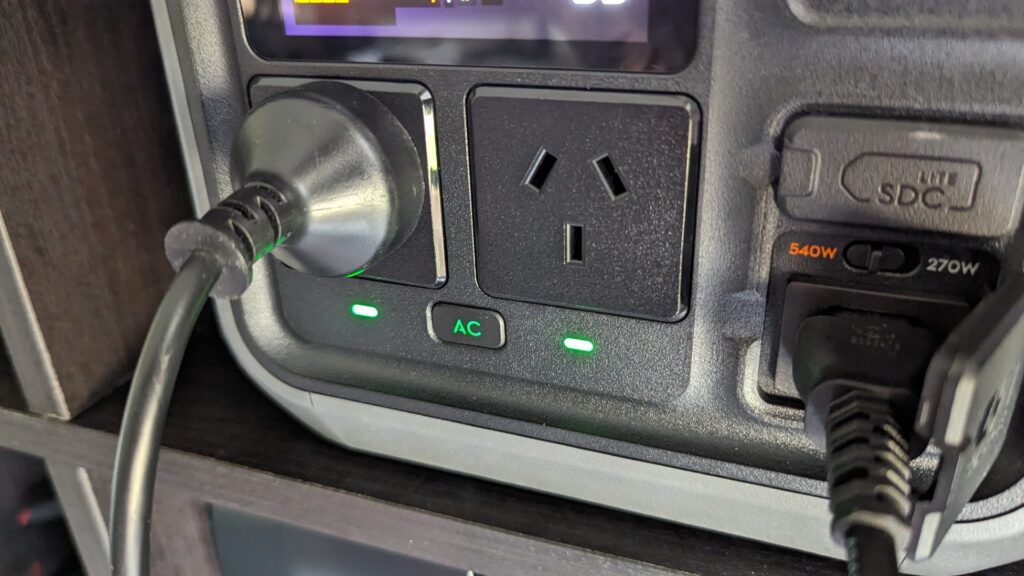

Issues and Opportunities
As great as this product is, it is not perfect. There are some issues and opportunities I’d like to see in future versions of the product.
Something I’d love to see is individual power switches for the AC ports. Right now we have a single button that controls if the AC ports are enabled or not, however when you have multiple devices connected (i.e. two laptop chargers, you may want to leave the connected and simply turn these off independently. The way it’s configured right now you’d have to disconnect one of them which is inconvenient.
The top of the Power 500 is a flat surface where you can place items like phones while they charge. This is a great start inclusion, but I would like to see this as a rubberised surface that means if you needed to have something charge on top while the Power 500 is in the boot of the car, you’d be assured it’d be there when you arrived at your destination.
One gripe I had with the packaging was a very strange decision to include a piece of foam between the handle and the chassis, which for a very strange reason, was wrapped in plastic. Generally, DJI is getting much better at sustainability and packaging, so this felt like a very strange inclusion.




Opportunities
- There’s no doubt that the price will be a barrier to many. Any opportunity for DJI to bring this down would help the product be accessible to more. If you’re a family that goes on holiday, this may be a valuable investment, allowing you to leave individual power banks at home and simply take one battery to help power the family. I think DJI should promote this as a market for this product.
- Right now, there are just 2 models and its understandable when a company enters a new segment, they may want to tread carefully and monitor demand, but offering more capacities might attract a wider customer base.
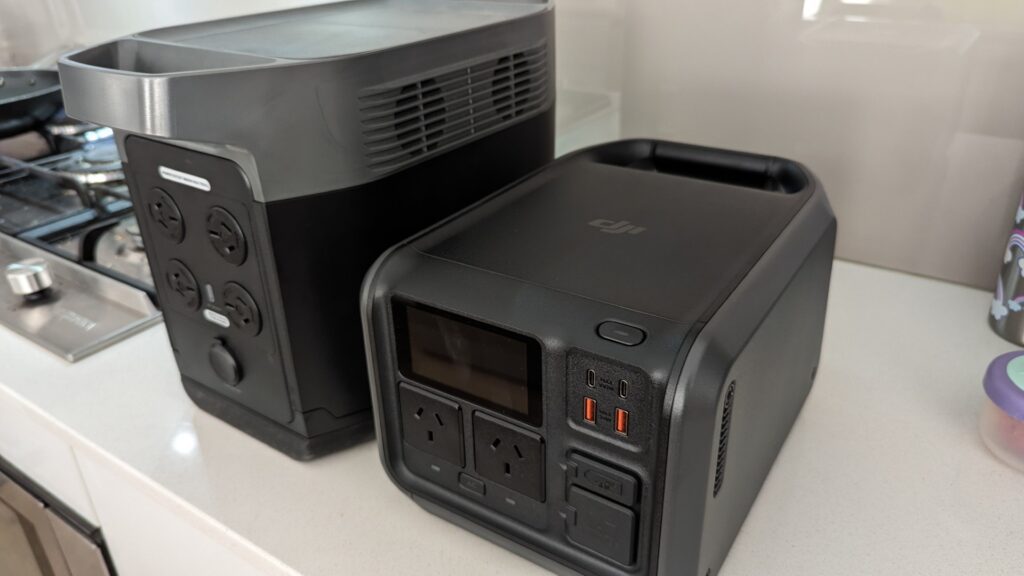

Price and Availability
The DJI Power 500 is available for purchase on DJI’s official website and through authorized retailers. While it is positioned at a premium price point, the advanced features and robust performance justify the investment for users seeking a high-quality portable power station.
The DJI Power 500 costs A$729.00 in Australia for the unit itself, if you purchase the bundle which includes the Power 500 & 120W Solar Panel, you’ll be up for A$1,407.
The big brother, the DJI Power 1000 costs A$1,369 and with a single solar panel costs A$2,047. There’s also a crazy 3-panel option that allows you to collect more of the sun’s energy to charge from but costs a significant A$3,251.
The cost of this may seem high, but it does depend on your perspective. If you’ve purchased a drone, something like a Mavic 3 for a few thousand dollars and are using it commercially to make an income, then investing in a battery like this to enable an all-day flight to capture the perfect shots, is worth its weight in gold.
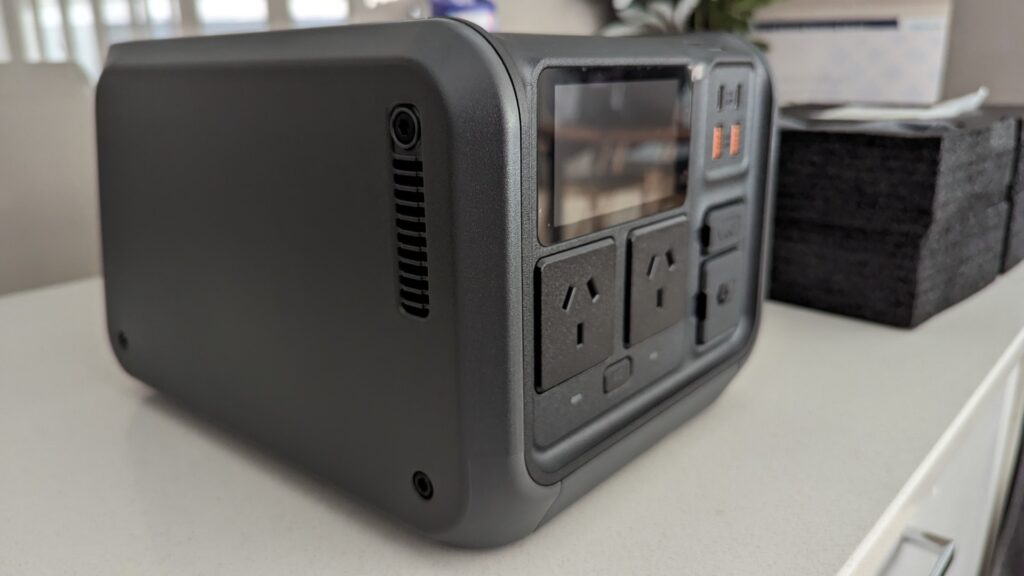

Overall
The DJI Power 500 is a versatile, high-capacity portable power station suitable for a variety of applications, from outdoor activities to emergency backup.
Its fast charging, multiple connectivity options, and quiet operation make it a standout choice. Despite its higher cost and the need for additional accessories, it provides excellent performance and reliability, making it a worthwhile investment for those in need of a dependable portable power solution.
As someone with a Tesla in the garage, the opportunity to charge this up, throw it in the sub-trunk of the car and have access to charge any device on AC is a great resolution to the car not having an on-board AC inverter.
If I’m travelling any kind of distance, this would be a smart thing to pack on a trip, with drones, GoPros, or any other content creation device (i.e. DJI’s handheld stabilizers) that also requires power.
Those who are more adventurous and travel to go mountain biking may use this as a solution to make sure they can inflate tyres wherever they go, without the need for a dedicated 12V pump. There are just so many use cases you can think of where our modern lives may need to leverage portable power that makes this a very compelling option.
For more information and purchasing options, visit the DJI Power 500 product page.
